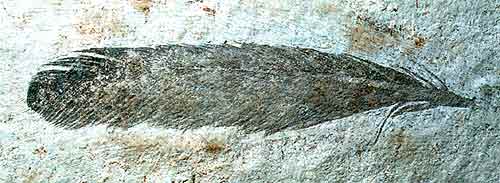Over the years there have been hundreds of films and thousands of pictures made of dinosaurs, where scientists have carefully pieced together their shape and lifestyle. One critical piece of information for painting an accurate picture has been missing however - the colour.
Colours in mammals and most animals are produced by pigment molecules which don't survive the fossilisation process. However Jakob Vintner and colleagues from Yale University may have found a way of filling in the gaps for at least some dinosaurs.
They have been studying fossilised feathers from birds that lived over 70 million years ago in what is now Brazil. They noticed that there were bands of small lumps of carbon running across the feathers. Up until now these were thought to be the remnants of feather eating bacteria, but Vintner thinks they are actually fossilised melanosomes - small lumps within the feather which contain the dark pigment eumelanin which is related to the pigment in your skin cells which give you a sun tan.
This pigment is known to inhibit the growth of bacteria and the parts of the feather with lots of the lumps seem to be better preserved than the areas with fewer.
In modern feathers the shape and distribution of these melanosomes give the colour of the feather, so if enough of them are preserved one should be able to tell what colour the feather was before it was fossilised. Birds are dinosaurs' closest living relatives, and several dinosaur feathers have been preserved, so there is every chance we could be able to tell their colour from any melanosomes preserved in them.










Comments
Add a comment